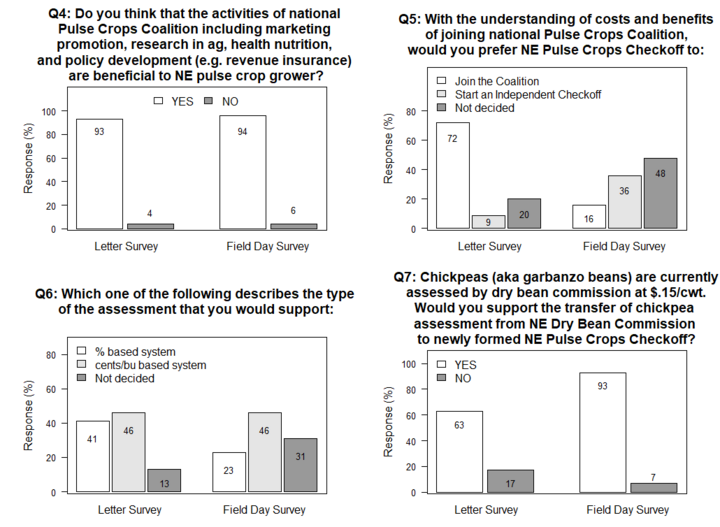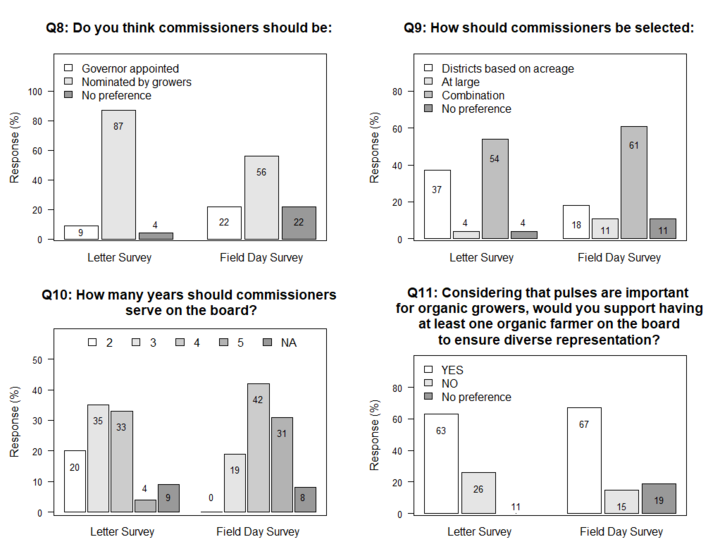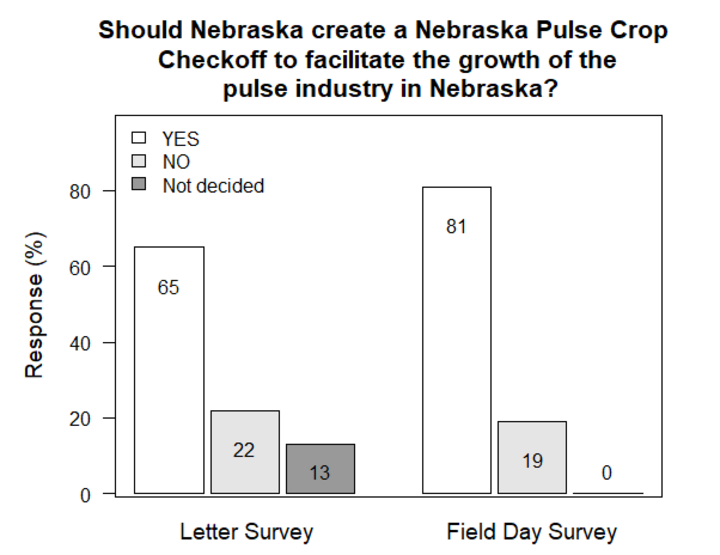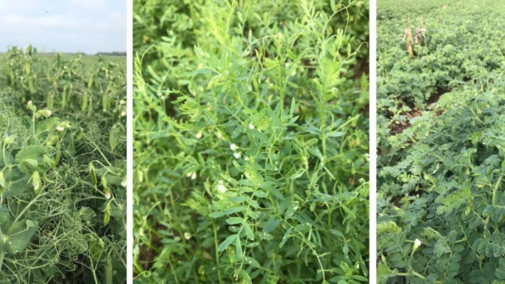Growth of Pulse Crops Industry In Nebraska
In 2018, the combined acreage of field peas, lentils, and chickpeas in Nebraska increased to approximately 80,000 acres. Over time, it has become easier to find seed and markets for pulses, and with the support of University of Nebraska faculty and funding from NCR SARE and the seed industry, growers have learned more about field peas, their rotational benefits, agronomic traits, and potential profit in different parts of the state. Also, Nebraska pulse crop processors, including New Alliance, Jelinek Custom Cleaning, Gavilon Grain, Redwood, and some out-of-state contractors like Farmers Business Network and Montana Integrity are contributing to this synergistic effort to grow the Nebraska pulse crops industry.
The USA Dry Pea and Lentil Council
The National Pulse Crops Coalition, administrated by the USA Dry Pea and Lentil Council / American Pulse Association, has offered their assistance in this process. So far Idaho, Washington, Montana, North Dakota, and South Dakota are part of this coalition to provide equity for the industry, revenue-based crop insurance for growers, and a seat on the national board.
To become part of the coalition, the Nebraska checkoff would need to have a minimum assessment of 1% of net sales (like the rest of the states in the coalition), deliver monthly reports of net sales, and pay a $10,000 annual membership fee. (Learn more about the Council's proposal in this flyer.)
Potential uses of checkoff funds include:
- creating heat-tolerant varieties,
- researching agronomic practices that result in high grain protein, and
- facilitating the development of a pulse grain processing industry that adds value to products and provides more jobs and revenue for the state.
Nebraska Pulse Crops Checkoff Survey
The objective of this survey was to get feedback on establishing a Pulse Crops Checkoff that would impose an assessment on field peas, lentils, and chickpeas grown in Nebraska. Questions regarding the type of assessment, representation, and other details were included. Nebraska farmers were surveyed on two occasions. A letter survey was sent to 250 pulse crop growers across the state in September 2018; 51 people responded. In June 2019 the survey was conducted at the Wheat and Pulse Crops Field Day at Grant, where 26 farmers responded. In both distributions, the surveyed individuals were mostly farmers who had grown pulses in the past and/or planned on growing pulse crops in the near future.
Representation
Among 51 letter surveys that were returned, 20 were from southwest Nebraska, 16 from the Panhandle, 13 from central Nebraska and 2 from northwest Kansas farmers who grew pulses in Nebraska. The farmers who filled out the letter survey represented 18,391 acres of Nebraska pulse crops (Table 1). Overall, farmer representation was diverse in terms of geography, experience in growing pulse crops, and planted acreage of pulse crops (Figure 2). Field Day respondents were largely from southwest Nebraska, representing 8,800 acres of pulse crops (Table 1).
| District | Number of Responses to 2018 Letter Survey | Number of Responses to 2019 Field Day Survey |
|---|---|---|
| Southwest Nebraska | 20 | 22 |
| Nebraska Panhandle | 16 | 2 |
| Central Nebraska | 13 | 2 |
| Northwest Kansas | 2 | 0 |
| TOTAL | 51 | 26 |
| Planted acres of pulse crops represented by respondents | 18,391 | 8,800 |

Figure 2. Survey responses by farmers on their experience growing pulse crops and pulse crop acres planted in Nebraska. Results based on 2018 letter survey and 2019 field day survey.
Disagreement on Type of Assessment
Most surveyed farmers were appreciative of the National Pulse Crops Coalition promoting pulse crop products, funding research, and developing policies that benefit growers (Figure 3; Q4). This is especially true when it comes to the revenue insurance policy only available in states who are members of the coalition.
The costs of joining the coalition, which includes a minimum 1% assessment and $10,000 coalition membership fee, caused a number of farmers to oppose or remain undecided on the type of assessment the Pulse Crops Checkoff should have (Figure 3; Q5 and Q6). For example, some organic farmers stated they would not support a percentage-based system because they have a premium for their product and would end up contributing proportionally more to the checkoff. In contrast, most conventional farmers would not support the cents per bushel or
There was large support among surveyed individuals to transfer the chickpea assessment from the Nebraska Dry Bean Commission to a newly formed checkoff (Figure 3, Q7).

Figure 3. Survey responses by farmers on activities of national Pulse Crops Coalition, type of commission, and inclusion of chickpeas in proposed checkoff. Results based on 2018 letter survey and 2019 field day survey.
What Should the Board Look Like?
The survey suggested that farmers prefer commissioners to be nominated by growers, have a selection process based both on acreage districts and at large, have board service last for three or four years, and include an organic farmer on the board to ensure diverse representation (Figure 4).

Figure 4. Survey responses on how Pulse Crops Checkoff board commissioners should be nominated and elected, how long they should serve, and whether an organic farmer should be required to be on the board to ensure diverse representation. Results based on 2018 letter survey and 2019 field day survey.
Should Nebraska Create a Pulse Crops Checkoff?

Despite disagreement on how the assessment should be set up, most respondents appeared to support creating a Nebraska Pulse Crops Checkoff (Figure 5). Further discussion may be useful to address conflicting opinions regarding the type and size of the checkoff.
Nebraska pulse crop farmers are encouraged to consider the costs and benefits of two ways to set up the assessment. For example, if Nebraska joins the National Pulse Crops Coalition, the most notable benefit would be the immediate availability of crop revenue insurance. However, the national organization is asking Nebraska checkoff to pay a $10,000 membership fee, have the assessment set at a minimum 1% of net sales, and send monthly reports of all the sales in Nebraska. The Nebraska board could decide whether the rest of the checkoff dollars should stay in Nebraska or be sent to support the activities of the national organization. Another option would be to set the assessment based on the cents-per-bushel system or a percent-based system that is less than 1% of net sales. Joining the national coalition would not be an option with this approach.
Growers may want to consider:
- Are you willing to pay a 1% assessment on pulse crops to gain revenue insurance?
- If not, how much are you willing to pay to promote your pulse crop products?
- Will the amount Nebraska pulse crop growers contribute to the checkoff be enough to achieve the goal of supporting this industry in Nebraska?
Establishing a Pulse Crops Checkoff in Nebraska could:
- send a clear signal to the processing industry that pulse crops have a future in Nebraska;
- generate funds for research and public breeding programs; and
- open the door to benefits from the National Pulse Crops Coalition such as revenue insurance.
Who to Contact?
Pulse crop grower Roland Rushman of Gurley is leading efforts to form the Nebraska Pulse Crop Checkoff. He encourages interested growers to contact him at rolrushman@daltontel.net with any questions or suggestions. In addition, Nebraska Extension in Perkins County (308-352-4340) is providing an unbiased platform for discussing the costs and benefits of a Nebraska Pulse Crops Checkoff. Read more about this effort in Nebraska Farmer.

